|
Di seguito gli interventi pubblicati in questa sezione, in ordine cronologico.
CBD was first isolated by researchers in 1940 but its structure was not identified until 23 years later.

Natural Occurrence
Although scientists have identified over 60 different cannabinoids in the marijuana plant, CBD is present in abundant levels and represents up to 40% of cannabis extracts.
Like THC, the concentration of CBD is highly variable from strain to strain. CBD levels are suggested to have declined over past years due to the preference and selective breeding of marijuana with higher THC levels in the underground market.
Effects of CBD
CBD can’t get you high – it doesn’t act on CB1 receptors and therefore has no psychoactive properties. This single factor makes CBD a much more useful compound, both legally and medicinally.
In addition to being non-psychoactive, CBD has even been found to counteract a number of the psychoactive effects of THC. Studies have shown CBD to lessen the hallucinogenic effects of THC, block THC’s interference with memory and decrease social isolation induced by THC.
Strains and pharmaceuticals (such as Sativex) that balance THC with high CBD levels are able to enhance the benefits of THC while reducing its negative psychoactive effects.
Safety of CBD
Many studies have been conducted on CBD to evaluate different aspects of its safety. Some of the findings include:
Embryonic Development – Studies conducted to evaluate the safety of CBD intake for pregnant mothers found it to have no significant effect on developing embryos.
Food Intake – Studies have found that, unlike THC, CBD does not increase food intake. A study found that chronic administration of CBD for up to 2 weeks actually reduced weight gain in rats, suggesting that CBD may have the opposite effect of THC on food intake.
Motor Changes – Studies have not found CBD to induce motor changes, unlike THC.
Physiological Effects – CBD seems to have no effect across a wide range of physiological measures, including blood pressure, heart rate and body temperature.
CBD, like THC, is remarkably non-toxic and no human overdose has ever been recorded.
Medical Uses of CBD
CBD possesses an incredibly wide range of medicinal properties, similar to THC. However, CBD is not psychoactive and thus has a clear advantage over THC for use as a medicine. Studies have demonstrated CBD to exhibit the following list of therapeutic properties:
Anti-inflammatory – making it useful in treating multiple sclerosis and other neuroinflammatory disorders
Anticonvulsant – making it useful in treating epilepsy
Antiemetic (anti-nausea) – making it useful in treating chemotherapy and AIDS patients
Anti-tumoral – making it useful in fighting various forms of cancer
Antipsychotic – Making it useful in treating schizophrenia
Anxiolytic (anti-anxiety) and Anti-depressant – making it useful in treating anxiety and depression disorders
Anti-oxidant – making it useful in treating Parkinson’s Disease, Huntington’s Disease and numerous other neurodegenerative disorders
Sleep-inducing – making it useful in treating various sleep disorders
Despite its potential as a therapeutic agent in so many disorders, current research is still in the early stages and has yet to progress to clinical trials for the vast majority of listed conditions. Unfortunately, the legal status of CBD and its close association with marijuana continue to hinder its progress towards widespread access and use of CBD as a medicine.
Source: truthonpot.com
First isolated by scientists in 1964, THC was later discovered to act within the natural cannabinoid system of the human body – the endocannabinoid system – in order to elicit its effects.
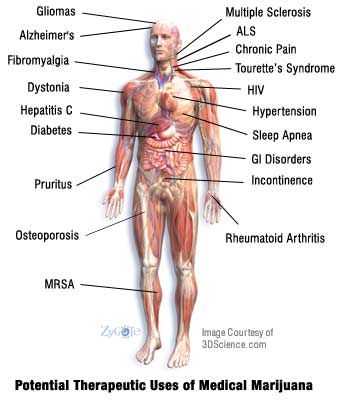
THC has a wide variety of effects on its user, affecting both the mind and body. Not only is THC responsible for many of the medicinal effects of marijuana, but it is also the chemical that causes users to feel “high” after ingesting marijuana.
Natural Occurrence
THC is produced naturally by the flowers of the female Cannabis plant and is just one of over 60 cannabinoids that are produced. The levels of THC contained in each plant vary according to strain. While some strains of marijuana like hemp have almost no THC at all, others have been selectively bred in order to achieve THC levels as high as 25%.
Cannabidiol (CBD) is another commonly known cannabinoid that is found in marijuana. Medical marijuana strains are frequently labelled with both THC and CBD levels, as both cannabinoids elicit their own unique effects on their users.
Short-term Effects of THC
Although cannabinoid receptors are found throughout the human body, THC acts mostly on the receptors found within the brain. This is why THC has such strong psychoactive properties and is closely associated with the “high” that marijuana users experience.
Along with feelings of euphoria, THC has also been reported to induce relaxation, alteration of sights, sounds and tastes, fatigue and increased appetite.
Medical Properties of THC
Extensive research over the past few decades has found THC to possess numerous medical properties that are beneficial in a wide range of disorders, some of which include:
- Alzheimer’s Disease
- Atherosclerosis
- Glaucoma
- Multiple sclerosis
- Parkinson’s Disease
- Sleep apnea
- Tourette Syndrome
- Cancer (various forms)
- and many more…
THC also has antiemetic (anti-nausea) properties, which makes it useful for treating AIDS and chemotherapy patients.
Marinol® – a pure THC pill – is legal for medical use and is available for patients in certain countries such as Canada, United States and Germany. However, patients have reported feeling too intoxicated from Marinol®, likely because of the lack of other cannabinoids which naturally occur in the Cannabis plant and help to mitigate the psychoactive effects of THC. Newer cannabinoid-based medications are being developed to include other medicinal cannabinoids such as CBD (cannabidiol) in hopes of maximizing medical potential and reducing adverse side-effects.
Toxicity
Although the toxicity level of THC has never been tested on humans, animal studies have demonstrated it to be remarkably non-toxic. Studies involving small animals such as rats have shown that a tremendous amount of THC (around 1000mg/kg) must be administered in order for death to occur. Other studies involving larger animals failed to result in death even when doses of THC of up to 3000mg/kg were administered.
Not a single case of human death by THC overdose has ever been documented.
Long-term Effects of THC
Studies documenting the long-term effects of THC intake have had varied and inconsistent results. Although highly debated, certain studies have found long-term use to result in the following negative side-effects:
- Short-term memory loss
- Lower mental aptitude scores
- Higher rates of psychosis and schizophrenia
However, there has yet to be any conclusive evidence of any negative long-term effects associated with THC intake.
Source: truthonpot.com
Numerous studies have come to this conclusion after investigating the toxicity of marijuana and its active components – chemicals known as cannabinoids.
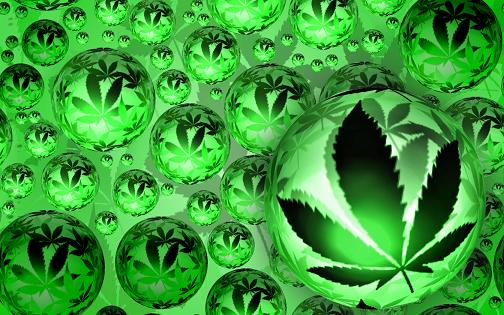
Studies have mostly focused on the toxicity profile of the cannabinoid tetrahydrocannabinol (THC) because of its potent psychological effects. What they’ve found is that although THC is a psychoactive substance and is responsible for the “high” that marijuana users experience, it is also remarkably non-toxic.
What The Studies Say
Many studies have set out to investigate the toxicity of cannabis and its various constituents. These studies measure toxicity levels by determining the median lethal dosage (LD-50). The LD-50 measurement is the point at which 50% of the test animals die (a 50% lethal dosage).
Studies involving small animals such as rats have established an LD-50 point for THC at incredibly high levels (around 1000mg/kg). Studies involving larger animals such as monkeys and dogs have failed to achieve an LD-50 point, even at enormous doses of over 3000mg/kg.
Although an LD-50 rating has never been established in humans, estimates can be made by extrapolating the results of animal studies.
The non-fatal dosage of 3000mg/kg given in studies of larger animals would be equivalent to an average 70 kg human ingesting 210 grams of pure THC. Given that the average level of THC found in marijuana is approximately 10%, a person would have to smoke 2.1 kg of marijuana all at once in order to reach the same levels of THC as seen in toxicity studies.
With these numbers in mind, its easy to see why marijuana is far less toxic than everyday substances such as aspirin (LD-50: 200mg/kg) and caffeine (LD-50: 192 mg/kg). In 2008, The Canadian Medical Association Journal published a review study spanning 30 years of research, concluding that there are no serious adverse effects of using marijuana.
‘Greening out’
Although ingesting too much marijuana cannot cause death or permanent disability, a temporary form of overdose is common, especially in new or inexperienced users of the drug. This phenomenon is casually referred to as ‘greening out’ and usually results in some combination of the following symptoms:
- Feelings of anxiety, paranoia or fear
- Nausea and vomiting
- Increased heart rate
- Uncontrollable shaking
- Hallucination and/or disorientation
Thankfully, ‘greening out’ is only a temporary phenomenon and will naturally pass within a few hours.
In extreme cases, it may be wise to seek medical assistance for someone suffering from a marijuana overdose in order to ensure their safety if anything were to go wrong. There is always the possibility that marijuana obtained from the underground market may be laced (or “cut”) with other drugs, in which case the danger of the situation becomes severely amplified.
Source: truthonpot.com
This frightening belief was popularized in the 1970s when Ronald Reagan famously stated, “the most reliable scientific sources say permanent brain damage is one of the inevitable results of the use of marijuana.”

In the following years, Reagan’s scientific sources would be discredited and subsequent studies would be unable to replicate any evidence of brain damage, yet the myth remains as prominent today as it was 40 years ago.
False Monkey Study
Dr. Robert G. Heath was a researcher at Tulane University in New Orleans when he reported the findings of an experiment that apparently proved a connection between marijuana use and brain damage. Dr. Heath had conducted the study on rhesus monkeys by exposing them to an equivalent of 30 marijuana joints per day. After 90 days, the monkeys began to waste and die. When they were later autopsied, Dr. Heath reported significant brain damage in the monkeys that had been exposed to cannabis.
Despite strong support from the federal government, the study was heavily criticized for inaccurate procedures upon its release. Critics suggested that suffocation may have been the actual cause of brain damage instead of marijuana itself.
The findings were challenged and ultimately dismissed by a pair of larger, better-controlled studies – one by Dr. William Slikker of the National Center for Toxicological Research and the other by Charles Rebert and Gordon Pryor of SRI International – that attempted to replicate Dr. Heath’s results without success. The studies showed no change in the brain structure of monkeys that were given daily doses of marijuana for up to one year.
Human Studies
A number of studies have been conducted on human marijuana users over the past few decades, beginning in the 1970s as well.
In 1971, a study published by Campbell et al. involving 10 heavy users seemed to demonstrate a decrease in brain cells in a specific area of the brain, adding further to public concerns over marijuana use and brain damage. However, subsequent studies (Co et al., 1977, Hannerz and Hindmarsh, 1983 and Kuehnle et al., 1977) failed to replicate these findings, suggesting that the initial study was flawed yet again.
Recent research conducted on human subjects has also revealed conflicting evidence on marijuana use and brain damage. A study published in 2000 by researchers at the University of Iowa found no evidence of cerebral atrophy or regional volume differences in MRI scans of frequent cannabis users when compared to non-users.
On the other hand, the support for marijuana use causing brain damage seems to be stronger in studies that separate users by age. An early study conducted by Wilson et al. (2000) found that marijuana users who started using before the age of 17 seemed to exhibit noticeable changes in brain matter volume. However, the study found no differences in whole brain volumes overall.
In 2012, Duke University researchers published the results of a study that seemed to show that adolescents who started using marijuana before the age of 18 – and diagnosed as addicted by the time they were 38 – experienced a drop in IQ by early adulthood. The study suggested that heavy users could lose as much as 8 IQ points. However, an analysis published a few months later in the same medical journal determined that the findings of the previous study were once again plagued with inaccuracies and – using a statistical model to evaluate the original study’s data – seemed to show that there was no correlation between marijuana use and a drop in IQ.
Finally, studies that have investigated the effects of marijuana on brain cells have revealed findings that directly contrast with the popular belief of marijuana causing brain damage. In fact, a study published in 2005 showed that a synthetic form of THC could increase the growth of new brain cells – a process known as neurogenesis. CBD has also been found to have a similar effect on brain cell generation. Taken together, these findings seem to contradict the notion that marijuana may cause abnormal brain development in adolescent users.
Warning: Alcohol and Caffeine Can!
Most commonly abused substances – including alcohol and caffeine – can cause permanent brain damage so it may be a surprise to hear that marijuana is safe in this regard. Although users of marijuana may not be at risk of neurological damage, cannabis is still a psychoactive substance that subjects its user to a temporarily altered state of mind.
Source: truthonpot.com
Many also believe that the smoke from marijuana poses similar health risks as tobacco smoke, but is this a myth or reality?

Marijuana Vs. Tobacco
The smoke from burning marijuana leaves contains several known carcinogens, similar to those found in tobacco smoke. Worse, cannabis smoke also deposits a hefty amount of carcinogen-containing tar into the lungs – 4 times as much tar as an equivalent cigarette would due to the way marijuana joints are usually rolled (loosely packed and unfiltered).
On the other hand, the smoke from marijuana contains a set of very unique chemicals known as cannabinoids (eg. THC and CBD), which are not found in cigarette smoke. Numerous studies have found cannabinoids to possess potent anti-cancer and anti-tumor effects.
This key difference in the smoke produced by marijuana and that of cigarettes is suspected to play a major role in the different outcomes that marijuana and cigarettes have on the lungs.
What The Studies Show
Over the past decade, two large-scale studies have set out to identify the impact of heavy, sustained marijuana use on the lungs.
The first of these studies was led by Dr. Tashkin – a federal researcher and pulmonary specialist who has conducted over 30 years worth of research on marijuana and the lungs through generous grants from the National Institute on Drug Abuse (NIDA). In 2006, Tashkin co-authored a study involving over 2000 people which showed that, unlike tobacco, marijuana use did not increase the risk of lung cancer, even in subjects who reported smoking over 20,000 marijuana joints in their lifetime.
The second study was published in 2012 by a separate team of researchers from the University of California. It was the largest study ever to be conducted on marijuana smokers and involved a sample of over 5,000 adults. The researchers followed their subjects over a 20-year period and found that regular marijuana smoking – defined as a joint a day for 7 years or a joint a week for 20 years – had no impact on lung function. On the contrary, the results suggested a slight improvement in lung function for regular smokers of marijuana.
Both studies also included a sample of tobacco smokers for comparison and both were able to confirm what we already know – cigarette smoking is directly correlated with lung disease and impaired lung function.
What’s The Explanation?
So what is it about marijuana smoke that makes its impact on lungs so drastically different from cigarettes that even professional athletes are willing to partake in the occasional puff?
Although many experts seem baffled at the results of the two studies mentioned above, Dr. Tashkin believes he may have an explanation. He speculates that the THC molecules in marijuana may be protective of lung cancer by influencing aged cells to die before they can become cancerous.
“We hypothesized that there would be a positive association between marijuana use and lung cancer, and that the association would be more positive with heavier use. What we found instead was no association at all, and even a suggestion of some protective effect.” – Dr. Tashkin
This theory is well supported by the abundance of evidence that demonstrates THC’s strong anti-tumoral and other anti-cancer effects, even specifically in the case of lung cancer.
Other Risks of Marijuana Smoke
Although marijuana smokers may have little to worry about lung cancer or decreased lung function, studies show that marijuana users are still at risk of a disease known as chronic bronchitis.
Chronic bronchitis is characterized by inflammation of the airway, resulting in the following 2 symptoms:
• Persistent cough (a cough that won’t go away)
• Extra mucus (phlegm) production
Studies show that patients without noticeable impairment of lung function can still be suffering from symptoms of chronic bronchitis.
Unfortunately, there is no method of effective treatment for chronic bronchitis caused by smoking. The best method of prevention and treatment is to simply stop smoking – even just for a temporary period of time.
Vaporizing: Is It Safer?
If you suspect you may be suffering from chronic bronchitis but stopping marijuana use is not an option, investing in a vaporizer may be your best bet. A study published in 2010 showed that marijuana smokers who switched to using a vaporizer experienced benefits in lung health that were comparable to quitting cigarettes.
Health professionals recommend the use of vaporizers for all patients who use medical marijuana. Vaporizers allow the plant matter to be heated to a temperature high enough for cannabinoids to be released as a vapor but low enough to avoid the combustion and release of the harmful by-products normally found in marijuana smoke.
By using a vaporizer, the risk of airway inflammation associated with marijuana smoke may be avoided.
Source: truthonpot.com
In fact, early humans depended on hemp plants in order to fulfill an array of basic necessities such as clothes, food, fabrics, rope, paper and more. Even today, hemp is grown and cultivated in over 30 countries for much of the same uses that early human civilizations relied on the hemp plant for.
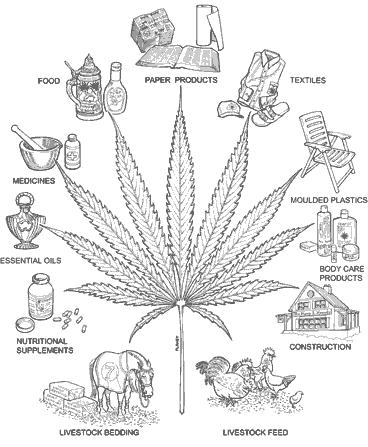
Cannabis sativa
The term ‘hemp’ refers to distinct strains of the Cannabis sativa plant that contain low levels of THC – usually less than 0.3%. Of the 2000 known varieties of cannabis plants, approximately 90% contain trace levels of THC and are useful only for their hemp seeds and fibers. The minimal levels of THC render hemp plants useless for the psychoactive and recreational purposes that cannabis plants are commonly associated with.
Hemp is highly regarded as an agricultural crop for a number of reasons. In addition to its wide range of applications from food to clothes, hemp is one of the fastest growing biomasses known – capable of producing up to 25 tonnes of dry matter per hectare per year. Hemp plants are also environmentally friendly, requiring no herbicides and few pesticides. As well, hemp is a very robust crop and can be grown in diverse soil and climate conditions.
The History of Hemp
Archaeological evidence of hemp use dates back to the Neolithic Age in China, where imprints of hemp fiber were discovered on Yangshao culture pottery from the 5th century B.C. Ancient Chinese civilizations would later use hemp to make clothes, shoes, ropes and an early form of paper.
Eventually, the use of hemp spread to other parts of the developing world. In the Princeton University Press publication entitled Prehistoric Textiles (1992), textile expert Elizabeth Wayland Barber summarizes the historical evidence that Cannabis sativa, “grew and was known in the Neolithic period all across the northern latitudes, from Europe (Germany, Switzerland, Austria, Romania, the Ukraine) to East Asia (Tibet and China),” but, “textile use of Cannabis sativa does not surface for certain in the West until relatively late, namely the Iron Age.”
Hemp was grown and cultivated in Europe mainly for its fibers, and was used for ropes on many ships, including those of Christopher Columbus. The famous explorer was known to carry hempseed on his ships in case of shipwreck, in order to grow raw materials and for use as a food source.
Early settlers in North America brought hemp with them and must-grow laws were eventually enacted that forced all farmers to grow the crop. In fact, the first laws in America to ever address the cannabis plant was a must-grow law enacted in 1619, which forced all settlers in Jamestown Colony, Virginia to grow the plant, since it was such an essential agricultural crop at the time. Similar laws were put in place over the next 200 years, during which time hemp even became a legal tender crop.
Hemp in the US
Hemp was highly regarded by many historic Americans of the time. George Washington grew hemp at Mount Vernon as one of his three primary crops and Benjamin Franklin started one of the first American paper mills by making paper exclusively out of cannabis hemp. Domestic production of hemp flourished until sometime after the Civil War when it began to be replaced by the production of newer materials that were less labor intensive, such as cotton.
The hemp crop received renewed interest during World War II following the 1942 production of a short film entitled Hemp for Victory, which promoted hemp as a necessary crop to win the war. Hemp was used extensively during the war to create textiles such as uniforms, canvas and rope.
Modern Day Uses
Hemp is grown in countries all over the world and is used for a wide array of industrial purposes, including paper, textiles, clothing, biodegradable plastics, construction, body products, health food and bio-fuel.
In 1938, Popular Mechanics Magazine published an article about hemp entitled The New Billion Dollar Crop, which described the usefulness of hemp in producing over 25,000 different products, ranging from dynamite to cellophane. Oddly enough, free production of hemp had already been made illegal a year earlier through the Marijuana Tax Act of 1937.
To this day, hemp remains illegal to grow under U.S. federal law, due to its inherent similarity to the marijuana plant. However, U.S. retailers and manufacturers import approximately 1.9 million pounds of hemp fiber, 450,000 pounds of hemp seeds, and 331 pounds of hempseed oil annually from Canada and other countries that regulate the farming of hemp.
Source: truthonpot.com
These two species of cannabis are widely cultivated around the world for various recreational and medicinal purposes.
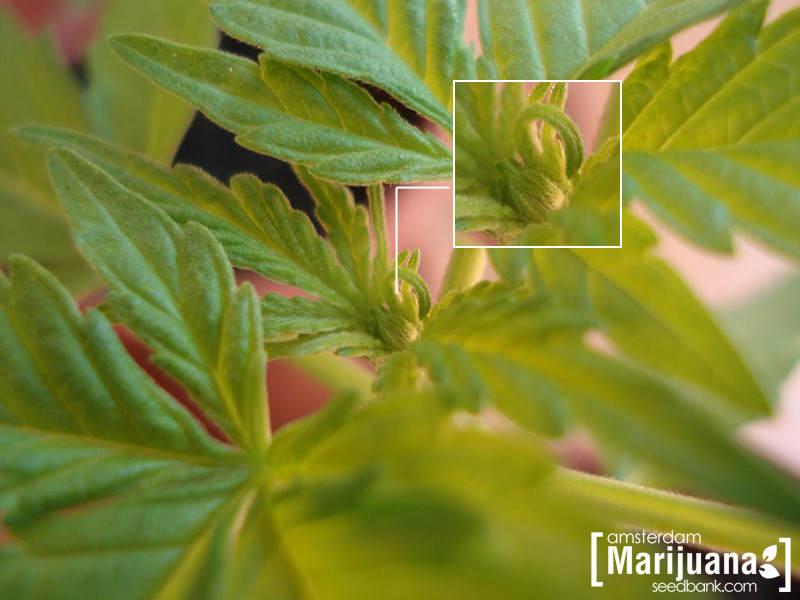
Marijuana and Cannabinoids
The distinct shape of the Cannabis leaf (pictured) is recognized around the world
Marijuana elicits a number of psychoactive and physiological effects on its user, all of which can be attributed to a group of chemicals known as cannabinoids.
The cannabinoids found in plants are sometimes referred to as phytocannabinoids (‘phyto’ = plant) and the female cannabis plant is known to produce over 60 unique cannabinoids when flowering. These flowers (or buds) are the only part of the plant that contain a high concentration of cannabinoids and are generally the only part that is cultivated for use.
Among these cannabinoids are two major constituents of marijuana – tetrahydrocannabinol (THC) and cannabidiol (CBD) – both of which have been thoroughly studied. THC has been the most popularized phytocannabinoid due to its well-known psychoactive effects, which have been attributed to the “high” that marijuana users experience.
Marijuana Intake
Cannabinoids must enter the blood stream to elicit their effects within the human body.
The most common method of intake is by smoking, as the cannabinoids in marijuana can only be released under certain conditions such as high temperatures. When marijuana smoke is inhaled, cannabinoids cross from the lungs to the blood stream within a matter of seconds. Once in the blood stream, cannabinoids enter circulation and begin to elicit their effects by binding to receptors found in various parts of the body.
Marijuana can also be prepared for ingestion, which results in a weaker but longer release of cannabinoids as absorption occurs in the stomach instead of the lungs.
Cannabinoid Receptors (CB1 and CB2)
There are two types of receptors in the human body that cannabinoids can bind to: CB1 and CB2. These receptors exist as part of the endocannabinoid system – the body’s natural cannabinoid system – that includes naturally occurring cannabinoids (endocannabinoids) such as anandamide and 2-arachidonoylglycerol (2-AG).
Phytocannabinoids – such as THC and CBD – are able to mimic the actions of endocannabinoids within the body by binding to the same receptors as they do.
THC has a higher affinity for CB1 receptors, which are most prominent in the brain and spinal cord but are also found in peripheral systems and organs such as the liver, GI tract, and thyroid glands. CB2 receptors are expressed almost exclusively in the immune system but have recently been identified in other parts of the body as well.
Source: truthonpot.com
The study was published in the Cambridge Journals and it can be found here.

During the study researchers examined the effect of CBD on the hippocampus part of the brain; the hippocampus is a portion of the brain which plays a key role in regulating emotion and memory – it’s the only part of the brain that can grow after someone is an adult.
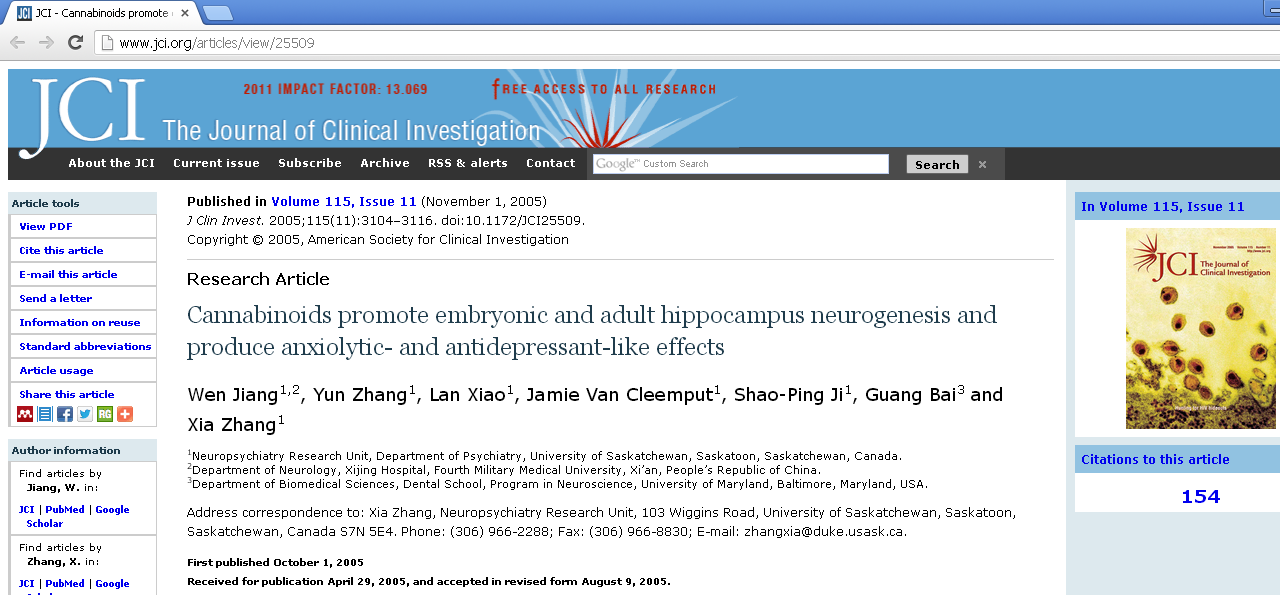
According to researchers, this study (and those like it) opens the door for cannabidiol being used to “manage psychiatric symptoms in disorders such as ageing, stress and neuroinflammation.”

This study is one of the most comprehensive of its type, and confirms a past study from 2005 that found similar results (which can be found in its entirety by clicking here).
Source: TheJointBlog.com via TheWeedBlog.com
Solve our daily updated chess puzzles with three levels of difficulty.

To enter the solution, click on the desired piece and drag it to the target square.
In some puzzles you have to enter a series of moves. You like chess puzzles?
Physicist Roger Penrose, of the University of Oxford, and anesthesiologist Stuart Hameroff, of the University of Arizona, propose that the brain acts as a quantum computer - a computational machine that makes use of quantum mechanical phenomena (like the ability of particles to be in two places at once) to perform complex calculations. In the brain, fibers inside neurons could form the basic units of quantum computation, Penrose and Hameroff explained at the Global Future 2045 International Congress, a futuristic conference held here June 15-16.
The idea is appealing, because neuroscience, so far, has no satisfactory explanation for consciousness - the state of being self-aware and having sensory experiences and thoughts. But many scientists are skeptical, citing a lack of experimental evidence for the idea.

The Orch OR model
Penrose and Hameroff developed their ideas independently, but collaborated in the early 1990s to develop what they call the Orchestrated Objective Reduction (Orch OR) model.
Penrose's work rests on an interpretation of the mathematician Kurt Godel's incompleteness theorem, which states that certain results cannot be proven by a computer algorithm. Penrose argues that human mathematicians are capable of proving so-called "Godel-unprovable" results, and therefore human brains cannot be described as typical computers. Instead, he says, to achieve these higher abilities, brain processes must rely on quantum mechanics.
But Penrose's theory didn't explain how this quantum computing occurred inside actual brains, just that the phenomenon would be needed to solve certain mathematical equations. Hameroff read Penrose's work and suggested small fibrous structures that give cells their structural support - known as microtubules - might be capable of carrying out quantum computations.
Microtubules are made up of units of the protein tubulin, which contains regions where electrons are swirling around very close to each other. Hameroff proposed that these electrons could become "quantum entangled," a state in which two particles retain a connection, and an action performed on one affects the other, even when the two are separated by a distance.
In the Orch OR model, the mathematical probabilities that describe the quantum states of these entangled electrons in microtubules become unstable in space-time. These mathematical probabilities are called wave functions, and in this scenario they collapse, moving from a state of probability to a specific actuality. In this state, the microtubules in one neuron could be linked to those in other neurons via electrical connections known as gap junctions. These junctions would allow the electrons to "tunnel" to other regions of the brain, resulting in waves of neural activity that are perceived as conscious experience.
"Penrose had a mechanism for consciousness, and I had a structure," Hameroff told LiveScience.
Problems with the model
Interesting as it sounds, the Orch OR model has not been tested experimentally, and many scientists reject it.
Quantum computers - computers that take advantage of quantum mechanical effects to achieve extremely speedy calculations - have been theorized, but only one (built by the company D-Wave) is commercially available, and whether it's a true quantum computer is debated. Such computers would be extremely sensitive to perturbations in a system, which scientists refer to as "noise." In order to minimize noise, it's important to isolate the system and keep it very cold (because heat causes particles to speed up and generate noise).
Building quantum computers is challenging even under carefully controlled conditions. "This paints a desolate picture for quantum computation inside the wet and warm brain," Christof Koch and Klaus Hepp, of the University of Zurich, Switzerland, wrote in an essay published in 2006 in the journal Nature.
Another problem with the model has to do with the timescales involved in the quantum computation. MIT physicist Max Tegmark has done calculations of quantum effects in the brain, finding that quantum states in the brain last far too short a time to lead to meaningful brain processing. Tegmark called the Orch OR model vague, saying the only numbers he's seen for more concrete models are way off.
"Many people seem to feel that consciousness is a mystery and quantum mechanics is a mystery, so they must be related," Tegmark told LiveScience.
The Orch OR model draws criticism from neuroscientists as well. The model holds that quantum fluctuations inside microtubules produce consciousness. But microtubules are also found in plant cells, said theoretical neuroscientist Bernard Baars, CEO of the nonprofit Society for Mind-Brain Sciences in Falls Church, VA., who added, "plants, to the best of our knowledge, are not conscious."
These criticisms do not rule out quantum consciousness in principle, but without experimental evidence, many scientists remain unconvinced.
"If somebody comes up with just one single experiment," to demonstrate quantum consciousness, Baars said, "I will drop all my skepticism."
Source: sott.net - Author: Tanya Lewis
|